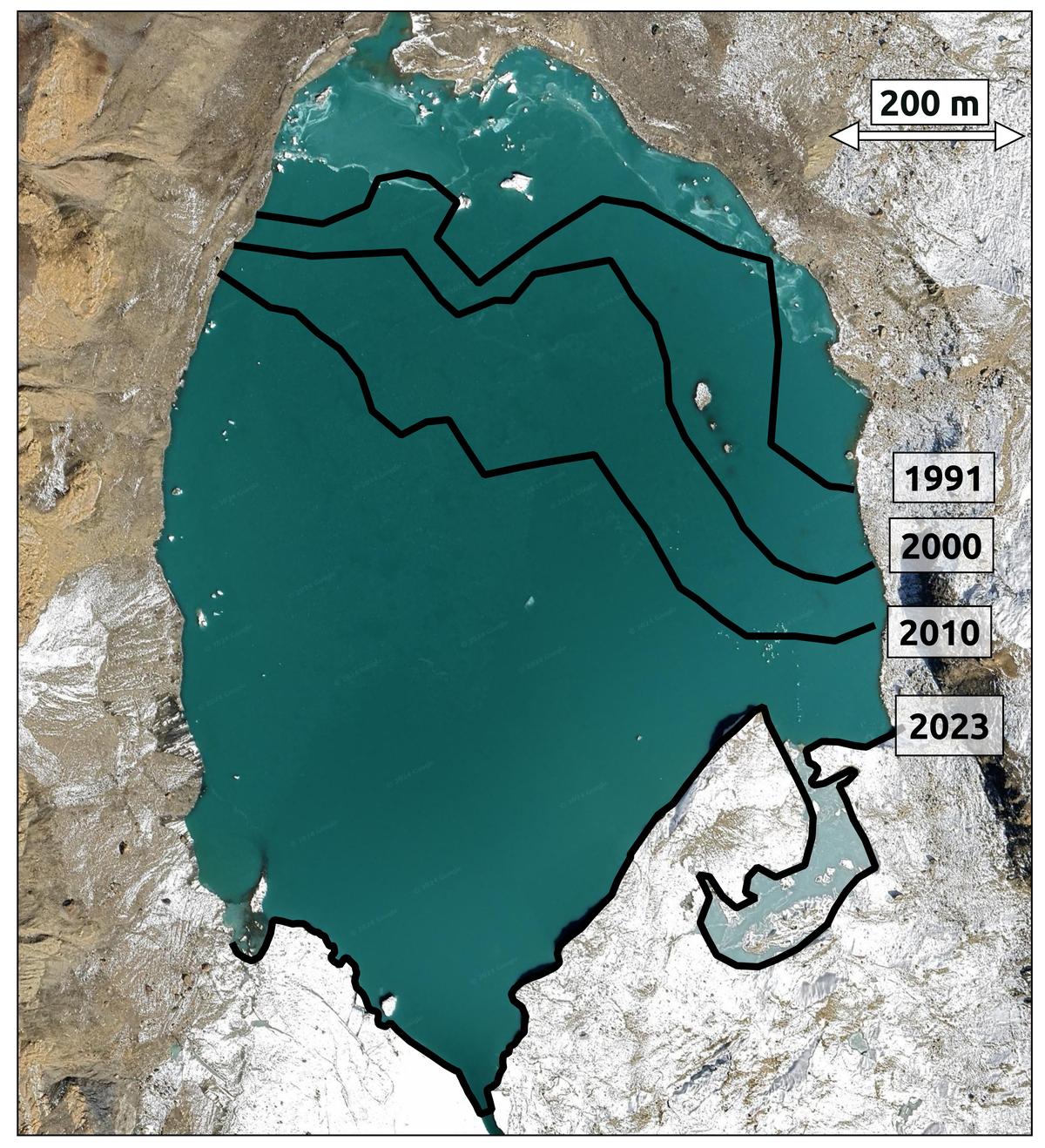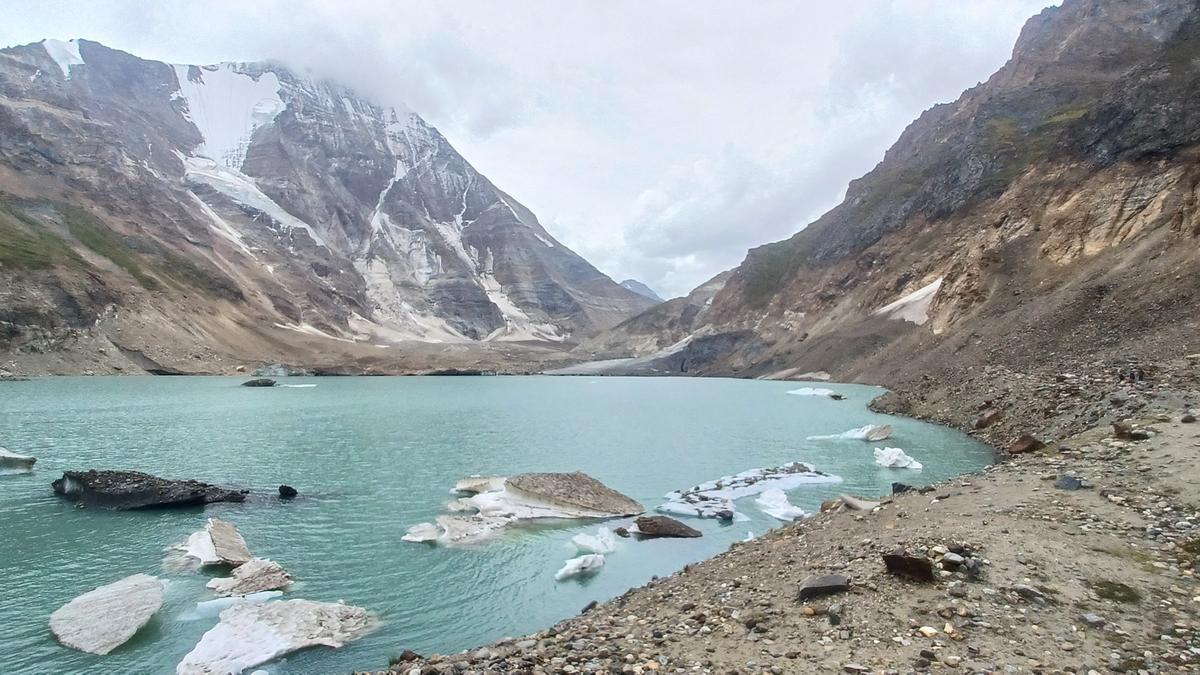
The glacial lake at the head of Nagmithong Nala, with floating icebergs that have broken off the retreating glacier. | Photo Credit: Saurabh Vijay

The map charts the expansion of the glacial lake at the head of Nagmithong Nala. | Photo Credit: Pawan Singh
It was yet another Himalayan expedition for a team of 10 earth scientists, including the three authors. On August 20, we arrived at the Kalapari camp in Nagmithong Nala, some 12,800 feet above sea level. With us were porters, their ponies, and a playful foal from nearby Khichoor village in Kargil.
Over the next few days, we measured air temperature and stream flow and flew a drone to study the local climate of the high-altitude arid glacier valley. We also set up an automatic time-lapse camera system to observe changes in the Lamo glacier and a glacial lake at its terminus.
The lake, formed as the glacier retreated, has grown more than 25 times in size over the past three decades. Today, it spans 5 lakh sq. m and stores about 500 crore litres of water — greater than Ladakh’s water consumption in six months. The possibility of a devastating glacial lake outburst flood (GLOF) in the valley is high, with the National Disaster Management Authority identifying this lake as one of the riskiest glacial lakes in the Indian Himalayas. Recent GLOF events in Sikkim (2023), Nepal (2024), and other parts of the Himalayas have caught the attention of government agencies and the people at large. Scientists have predicted that glacial lakes will proliferate and the risk of GLOFs in the Himalayas will grow in the coming decades because of global warming. The scientific community is working to enhance the understanding of GLOFs and to assess the associated risks.
While setting up the equipment and monitoring the lake, we met and interacted with groups of nomadic shepherds with hundreds of cattle, as well as adventurous hikers. They were travelling between the Chalong and Warwan valleys, via the Botkol Pass, a few hundred metres uphill from the lake. The trail involved a treacherous traverse over the Lamo glacier. For centuries, shepherds, travellers and invading armies frequently used this pass to travel between Kashmir and Ladakh. We realised that the traverse would become more dangerous as the lake expanded. Satellite data clearly indicate the pass is set to become inaccessible in the coming years.
“Aage to rasta achcha ho jayega na? (The pass will become better, won’t it?),” one elderly shepherd asked. He could not imagine the trail becoming impassable. “When are you going to publish your reports about the changes in the valley? We can plan better for future hikes here,” a young guide and an entrepreneur with a mountain-trekking company said. He emphasised that finding an alternative route is not easy and comes with a great economic burden for the company and loss of jobs for the local community.
At the end of our expedition, we were trekking back towards Khichoor. There, we were confronted by the cold water of the braided Chalong Nala, but fortunately a friendly shepherd dog came to our rescue, guiding us to spots where we could easily ford the streams.
By this time the conversation among us had turned to the kindness of the people and the animals for all of whom the Botkol Pass has been a way of life for centuries. Even as we realised the lived experiences of these people often go unnoticed in the world, we were sure there was still time left to learn from remote Himalayan communities about the grave but hidden challenges that climate change poses. A local approach to scientific research and mitigation policies will preserve these communities and their ways of life.
(Argha Banerjee is Associate Professor and Krishnanand J. is research scholar at IISER-Pune. Saurabh Vijay is Assistant Professor at IIT-Roorkee)
argha@iiserpune.ac.in
Published – September 15, 2024 01:05 am IST


